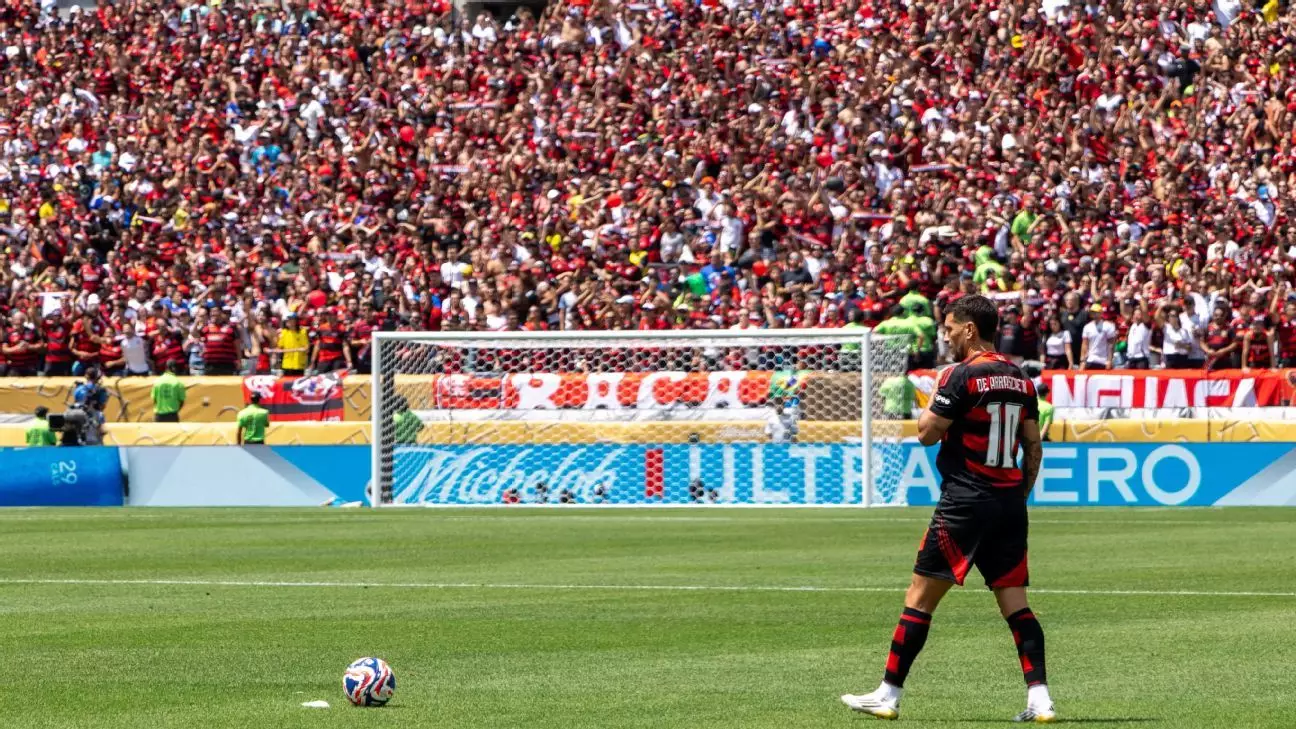As the FIFA Club World Cup embarks on its inaugural 32-team format, Brazil has emerged as a potential host for the next iteration in 2029. This ambition feels well-placed amid the current tournament, which has been plagued by unsatisfactory attendance, adverse weather conditions, and concerns over player endurance in extreme temperatures. Yet, despite these challenges, the spirit emanating from the South American teams, particularly from Brazil and Argentina, is electrifying. This enthusiasm, underscored by boisterous fan support, is rendering the competition more engaging and suggests that Brazil might indeed be the ideal host for future events.
The heart of the Club World Cup lies not only in the prestigious participants but also in the investment and fervor brought by the South American nations. Fans have traversed the globe, infusing matches with a vibrant atmosphere that undeniably enhances the tournament. Without the energetic presence of these fans, the competition risks being overshadowed by empty stands and lackluster performances.
Surprising Performances in the Group Stage
The South American contingent has showcased not just heart but also impressive skill on the field. By mid-stage, five of the six South American teams are performing well, with all four Brazilian clubs leading their groups. This remarkable showing reflects the rich footballing culture where talent and determination intersect. River Plate’s resilience and Boca Juniors’ surprising agility underline a narrative of unexpected success, challenging the notion of a predictable competition.
Among these narratives, Botafogo’s stunning victory over Paris Saint-Germain stands out, signifying the unexpected twists that shape tournament football. Although both Flamengo and Palmeiras have exhibited expected performances, their preparation for this tournament seems meticulously orchestrated. They are fully aware that they are on a quest to confront European counterparts and reclaim South America’s rightful place in international football.
The Evolution of South American Football
A deep-seated ambition fuels the drive in South American football. The Copa Libertadores, since its inception in 1960, epitomizes the desire to establish a foothold in the global football hierarchy. This iteration of the Club World Cup is a realization of dreams for South American clubs seeking reconciliation with their European rivals. The past Intercontinental Cup’s diminished glory has renewed the urgency for South American clubs to prove their mettle, especially given the historical disadvantages they faced in international fixtures.
This context of rising expectations reflects a broader narrative. While South America has struggled to compete on an equal footing with Europe, the timing of the Club World Cup aligns perfectly with their season’s rhythm, allowing teams to showcase their best format. The players are in prime condition, both physically and mentally, ready to seize this vital opportunity.
Managerial Tactics and Key Players
The dynamics within the teams are driven by astute management. Coaches like Abel Ferreira of Palmeiras have adopted strategies marked by patience and intelligence, ensuring their players maintain composure amidst high-stakes situations. Meanwhile, Flamengo’s approach, characterized by calculated risks, strikes a balance between aggressive play and defensive resilience, highlighting their understanding of the tournament’s demands.
Notable individuals, such as Jorginho at Flamengo, underscore the critical role of veteran leadership in high-pressure scenarios. His ability to dictate the pace of play offers Flamengo a significant tactical advantage, blending seasoned experience with youthful exuberance from the club’s talented ranks.
Botafogo’s defensive discipline demonstrates another dimension of South American football that contradicts previous stereotypes. Their game against PSG exemplified a commitment to defensive solidarity, challenging the prevailing notion of South American teams as solely flamboyant attackers. The ability to defend tenaciously while transitioning into effective counter-attacks speaks volumes about their tactical evolution.
Future Challenges and Opportunities
As the tournament progresses, South American teams face pivotal matches that will determine their paths forward. The coming days promise vibrant matchups, particularly for River Plate and Boca Juniors, who find themselves navigating through precarious conditions yet retaining hopes of progressing further. The unpredictability of knockout stages creates an atmosphere ripe for surprises, potentially shifting the narrative of the tournament.
For the South American sides, this tournament is more than just a series of matches; it’s a declaration of intent. Football in this region is more than a sport; it’s an embodiment of identity and passion that propels teams to reach for glory amidst global giants. With the roaring support of their fans and the resilience displayed thus far, South American clubs have the potential to make a profound impact, thereby reshaping the legacy of the FIFA Club World Cup.


Leave a Reply